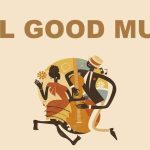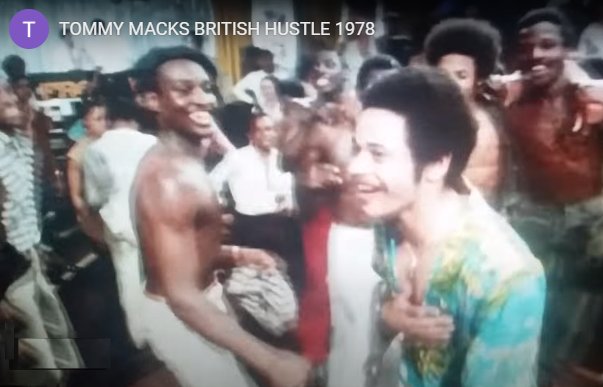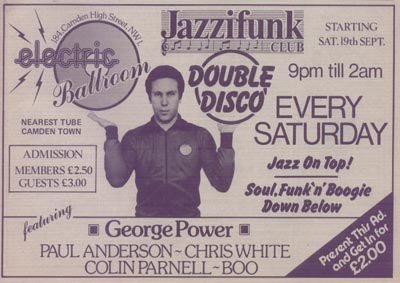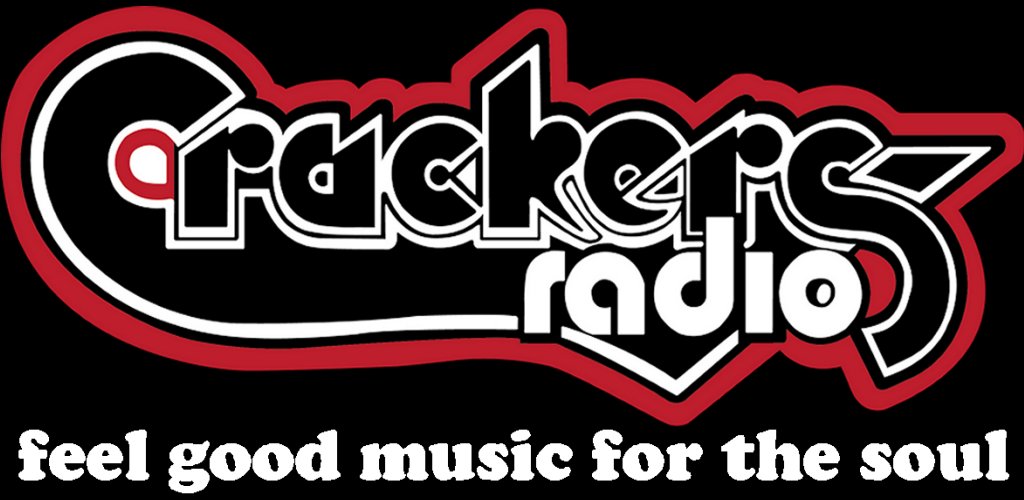You Goin Crackers ?
 “ YOU GOIN’ CRACKERS ? ”
“ YOU GOIN’ CRACKERS ? ”Norman Jay MBE reflects on the legendary London club
It was deep down in the basement of No: 203 Wardour Street on the edge of Soho that back in thwinter of 1975 the seeds of urban London club culture were first sown.
I first went there towards the end of ’75 armed with the free tickets given to us by my then best mate’s old man who knew we were into import funk and soul. We had eagerly looked forward to this new West End night for weeks as we were beginning to tire of the Thursday night soul sessions at Bluesville’s House of Funk (100 Club) with Ronnie L. and Greg Edwards.
We strolled in expectantly, chuffed to bits at our good fortune in blagging a free night out up West (even though it was a Tuesday night and we were both under age). We were immediately brought down to earth with a bang when we discovered to our horror that we were two of about 40 or 50 other punters in the place. The night had only been up and running for a couple of weeks and they had been handing out hundreds of cheap tickets in an effort to get the punters through the doors. Even with so few people in, I was struck by the atmosphere of the place, a typical seedy Wheatley Soho dive (the Wheatley Brothers owned several small clubs/venues around North and East London at the time) that had obviously seen better days.
Worn-out leather upholstered bench seating ran the length of the back wall of the club adding to the feeling of faded grandeur. I loved it though, especially the music and, in particular, the deejay that night: Mark Roman.
feeling of faded grandeur. I loved it though, especially the music and, in particular, the deejay that night: Mark Roman.
He was playing a blinding selection of hot new import 45s from America by the likes of Juggy ‘Murray’ Jones, Donald Byrd and Eddie Drennon – all completely new sounds to me back then and it totally blew my mind. I’d . followed Mark’s charts in Blues & Soul and loved his taste. And after a few weeks, the most commonly uttered words round our way at that time was “You goin’ Crackers?” (that’s if you considered yourself a true soulboy or girl).
I went back a few more times after that because I was really into the stuff Mark was playing but as often the case with ground breaking new nights – its super-hip status quickly ensured its premature demise. This new underground club venue frequented mainly by an elite group of sussed West End blacks both gay and straight (and straight boys who acted gay) happily mixed with the newly emerging fashion conscious white suburban soul (Bowie) boys and early punks. Looking back, the club was too far ahead of its time to really succeed and within a few short months, due to licensing problems, the night folded.
Many notable soul jocks at the time including legendary ‘Goldmine’ deejay Chris Hill and the truly awful Mr Superbad (from the K-Tel TV adverts of the time) and Nicky Price were brought in to replace Roman. All tried and failed to resurrect the fortunes of Crackers.
With the fortunes of the club in the last chance saloon, the hot summer of 1976 saw Crackers re-emerge from the clubbing doldrums with a last gasp new Sunday nightery which brought new optimism. Fronted by a new DJ name to most of us Soho heads, he was brought in by the Wheatley organisation to try and save the ailing venue. The unknown and outrageously camp George Power made his first Sunday appearance that summer.
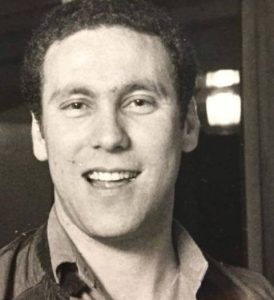
The word quickly spread on the Soho Soul grapevine that this swaggering Greek-Cypriot dude from North London was ‘carrying the swing’ in Soho on Sundays. He had previously made his name working in various Wheatley venues around London including the famed Royalty in Southgate and Bumbles in Wood Green where he was resident jock carefully cultivating a solid and mostly black following.
George’s packed Sunday night sessions at Crackers became an immediate success. He played the most upfront Stateside dance tunes around, often weeks, sometimes months, before they were ever released in the UK in a style that was very much his own brash, charismatic and very camp. He was the first deejay to really unite London’s lost nightlife tribes especially the black ones, introducing us to proper underground jazz funk album tracks, original New York disco, brilliant new Philly and Salsoul releases and Latin-based jazz dance and soul tracks. His cheesy sexual double entendre’s on the mic – ‘It’s time to get Jazz-ay” and “show me your poussez, lay-deez” – used to rub some of our lot up the wrong at first but we soon got used to and grew to love him for it.
He always ensured a rapturous response from the crowd every time he introduced a hot new track to his beloved dancers on the floor in front of him. Here the sexually charged atmosphere would be electric and close to eruption. Week after week the same faces flocked back and could be easily spotted at the bars, on the dancefloor or on those horrible leather seats. Everyone knew one another and danced their asses off till it all ended at around midnight.
At the time certain soul magazines ranted on and bigged up the largely white mainstream suburban soul scene centred around clubs such as the Lacy Lady in Ilford and the Royalty in Southgate, while the establishment soul mafia jocks of the day never really acknowledged Power. This was partly because of his black mixed-gay following and also because he was considered far too ‘street’ for their elitist suburban tastes. We embraced him with open arms though. Here in the heart of London’s West End, George Power was king! To us (and I suspect George felt the same way too) That was all that mattered. At last we had found our own ‘ghetto’ DJ champion laying down the law in cutting edge funk, jazz, disco and soul the way we knew it should be.
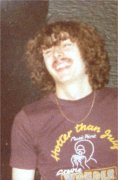
On the rare occasion George took a break, he was deputised by a tall willowy looking white dude with long hair who could also drop amazing tunes. His name was Andy Hunter and his style was more jazzy than George’s. If both Andy and George were unavailable, one of our own was picked straight off the floor to be the first person to make the (then unheard of for a black guy) transition from punterto turntables.
The dancer in question came from Hornsey and possessed all the right credentials. He had a terrific reputation as a funky dancer, he was a local hero and favourite with the girls and the crowds. He was really the only choice. The legendary and much missed ‘boogie-boy’ Paul ‘Trouble’ Anderson made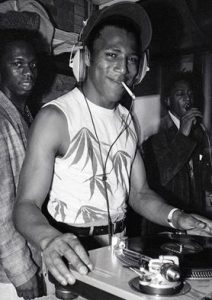 his West End debut at Crackers and I was there to witness it. His fierce no nonsense, abrasive styleof playing and unabashed youth playing tune after tune (aimed squarely at dancers on the floorbecause he was one of them) used to drive the club into raptures.
his West End debut at Crackers and I was there to witness it. His fierce no nonsense, abrasive styleof playing and unabashed youth playing tune after tune (aimed squarely at dancers on the floorbecause he was one of them) used to drive the club into raptures.
Then George came up with a real winner when he started the Friday lunchtime sessions at the same venue. It was a real gamble that paid off handsomely. The queues went round the block right onto Oxford Street. The sessions would start at 12 noon through till 3pm (and sometimes running on till 3.30 because no-one would go home). For a paltry 50 pence in, those afternoon sessions proved an instant success. Initially, it attracted a crowd of curious West End workers on their lunch breaks and the younger brothers and sisters of the Sunday regulars who would bunk tiff school, college or work just to be there. Soon the word went around and the place was full to bursting with ‘faces’, some of whom were ‘working’ in Soho.
Dancers and street fashion played a major role in the club’s rise to mythical status. All manner of funky street styles were first paraded on or around the dancefloor of Crackers. Black PVC T shirts, mohair jumpers, plastic sandals and fashion statements from Acme Attractions and SEX and Seditionaries down the King’s Road. Red Smith’s or Fiorucci carpenter jeans, capped sleeve T-shirts, Hawaiian or baseball shirts, red spotted neck ties. Later in the decade it became more street. Lois Jumbo cords, Farrah slacks, Kickers (originals) and the original 70’s Wrangler can jacket (all the coolest black dudes wore them). They were all de rigeur at Crackers long before they became mainstream fashion. I also spotted my first Pringle jumper down there too – because this was the birthplace of the original casual.
Many of the dancers were already well-known faces in clubland. They included Peter Francis (the black ‘daddy’ in the film ‘Scum’), Mohamed ‘the India rubber man’, Trevor Shakes who would go on to DJ at Mayfair’s high society hang out Maunkberrys, Horace Carter – ultra trendy with dreads who always seemed to have a beautiful Chelsea girl in tow, Clive Clarke, who would become a EMI national disco dance champion and choreographer, Kelvin, Derrick and Eon Irving, OiIly, Bassey, Des Parkes, Bevis Pink, original Grove boys Danny Jon Jules ‘Cat’ in Red Dwarf, and ’80s rapper Dizzy Heights were also regulars. As was club face Tommy Mac who would later become infamous on the Acid House scene alongside his pal Gary (ACCIIED) Haisman not forgetting Acton’s ‘Jabba’. They all had what we called ‘Crackers royalty’ status.
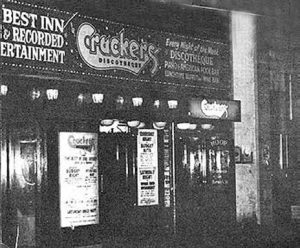
Not since the legendary Tiles club nearly a decade earlier (well before my time) had there been a funky black club of any note in the West End of London as important and influential as Crackers. In all that time I barely missed more than a dozen Friday or Sunday sessions.
By 1981, it was a new decade. Things had changed. Disco was dead. George Power and Crackers had enjoyed years of unparalleled success. But we were growing up and getting into new, different forms of black dance music like electro and Jazz Fusion and the club had run its course. Towards the end of 1981, Crackers moved up the road to the Horseshoe on Tottenham Court Road, but it was obvious it would be temporary and, shortly after, Crackers closed its doors for the last time.
Though it’s not necessarily their fault, I’ve always felt that over the years the UK Style and music commentators have never seen fit to fully acknowledge the legendary club’s massive influence on London club culture. This is the first time anyone has gone to print giving Crackers the props it so richly deserves. While there have been loads of great London clubs over the years claiming to be ‘the’ club that set the agenda and standards for the rise of club culture. They’re all pretenders’ mate.
I should know, as I’ve either been or played at just about every club that has ever made such claims. This was our Wigan Casino, our Loft, our Paradise Garage. Some of London’s top DJs and producers experienced their first taste of club culture at Crackers and most were directly influenced (like Paul ‘Trouble’, myself and others) by the deejaying skills of George Power (who incidentally was one of the founding fathers of Kiss FM). We learnt a lot from him both in terms of how to entertain crowds, how to play to crowds and the importance of being able to programme good music. This club played such an important role in the birth of modern London clubbing .

Article by Norman Jay MBE
First published in Faith Fanzine Volume 1, since republished (Volume 3, No 6 – Spring 2022) in tribute to Mark Roman, George Power, Eon Irving, Paul Anderson and Gary Haisman who have sadly passed away since being written
….reflections of crackers dancers
“Trevor Shakes, he was the main guy in London for me, I think most people would agree, he was the main boy in London at the time for dancing, with the latest moves. It was just like fashion. Someone would come up with the new moves and it was generally Trevor.”
Paul Anderson, Dancer & DJ
“I loved Crackers during the Mark Roman era. We were coming out of a period in London where there were very few clubs other than the Birds Nest chain that had a history of allowing blacks boys in. We didn’t drink enough for the management’s liking. So, in retrospect, Crackers was a fantastic club for its time and led the way for other West End night clubs to open up their doors to this mass of energetic young dancers, who by their presence brought in the other important element of good theatre – the audience.”
Clive Clarke, Dancer
“I was accepted as a white dancer because I could match them, that’s all it was. At that time there was about 15 or 20 dancers in that club better than me. That just gave me more confidence and a greater passion to get better as a dancer.”
Tommy McDonald, Dancer
“Along with the dancers came the dance-offs. These would tend to break out to the tougher tracks being dropped at the time. They were normally one on one, but I have witnessed and been part of a multiple dance off. The participants would normally keep their distance on the floor while checking out the opposition, showing just enough to dominate their space on the floor. At some point in the evening the tune would drop, the two steppers would withdraw to a safe distance and battle would commence.”
Ernie Baptiste, Dancer
“My inspiration for dancing came from Jabba and Leon Herbert, I did not want to dance like Tommy Mac, I wanted to dance like the best black guys. I had the same attitude to dancing as I did music; I would not buy a 7-inch single made in the UK. I wanted an import, I wanted the original pressing. Same thing with dancing – I wanted to dance like the best black guys. My fave record I first heard Mark Roman play was MFSB’s “Sexy,” a real Crackers classic. I can remember watching Trevor Shakes and Leon doing this dance to it with amazing arm movements. I thought, at the time, I could never dance as well as those guys. To be honest, no one could.”
Gary Haisman, Dancer
“On a Friday lunchtime at Crackers, the men’s toilets would be packed with blokes who had sweated up on the dance floor queuing up to drink out of the cold water tap, so they turned the taps off in the toilets to try and make them spend at the bar. A lot of the people in there had no money and came from very poor backgrounds. They were only there to dance.”
Kevin Kirk, Dancer
“Horace (Carter) was the king of Crackers for years and we had a showdown. Everybody knew that it was gonna come, there was a build up over months between Horace and his boys and my crew and all that, it was fantastic. But that’s what it was, it was about the dancing. That’s what was important: the grooves, the music and the dancing. It wasn’t about coming in, buying champagne and looking good, it was about serious music and serious dancing.”
Paul Anderson, Dancer & DJ
“The Dancers were like pop stars without a record”
Tommy McDonald
“Horace, however, took it to another level. He was like a natural ballet dancer. He had the grace. He introduced a whole new style. Up until then the dancing was really frenetic foot work, almost American tap jazz. Horace was very elegant because he’d been to ballet classes. Horace started a whole new style of dancing – from just one bloke.”
John Guinn, Dancer
“There was an unwritten rule at Crackers about only dancing on the actual floor if you were good enough. It’s like anything else – if you’re not good enough you only mug yourself off”
Gary Haisman
“The thing about dancing is that you can go out to a club one night and you can be the best dancer there. For one night it clicks and every move comes out, every spin comes off, every pirouette comes off and you can be the best dancer ever. Then on another night nothing comes off and you can be the worst. I’ve been there when I’ve been too scared to get on the floor or I’ve seen Clive [Clarke] dancing against Horace [Carter] and thinking I’m not dancing tonight because they’ll make me look bad. It’s a confidence thing”
Tommy McDonald
(Dancers quotes from interviews conducted by Terry Farley and Reuel Galloway.)
An oral history of the forgotten dancers that set London on fire in the late ’70s An extensive essay from Terry Farley celebrating the legendary dancers that made the London club scene what it was in the late ’70s. In the course of the research, Farley and Roual Galloway interviewed a number of these forgotten club […]
The first stars of the UK dance music scene weren’t DJs or club runners. They were the dancers. Dance music authority Terry Farley pens a tribute to the forgotten legends of the late ’70s and early ’80s September 17, 2015 By Terry Farley MARK ROMAN’S CRACKERS CLASSICS The Crusaders – Stomp and Buck Dance The Brecker Brothers […]
Nightclubbing is a series on RBMA where we tell the story of the spaces that have forever changed the world of music. In this edition, Stephen Titmus writes about Crackers, the oft-forgotten London club that helped popularize jazz-funk in the UK By Stephen Titmus March 11, 2013 A. I. E. (A Mwana) – Black Blood From […]
“ YOU GOIN’ CRACKERS ? ” NORMAN JAY MBE REFLECTS ON THE LEGENDARY LONDON CLUB It was deep down in the basement of No: 203 Wardour Street on the edge of Soho that back in thwinter of 1975 the seeds of urban London club culture were first sown. I first went there towards […]
-
Pages
- 1
